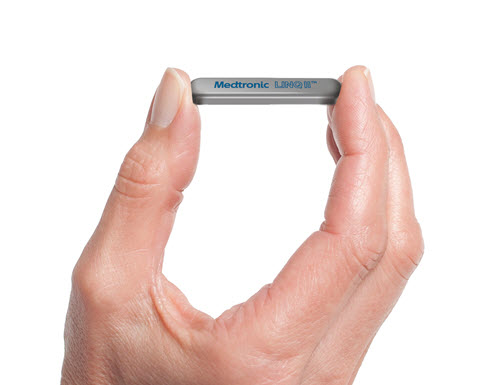Study Finds Opportunity to Standardize Post-Stroke Pathways Among Academic and Community Hospitals
World Stroke Congress 2022: DiVERT Stroke Study shows significant differences in post-stroke workflow protocols and cardiac monitoring
Medtronic today announced first results from the DiVERT Stroke clinical study, which showed that post-stroke workflow protocols and cardiac monitoring vary significantly across community hospitals and academic centers. The data were presented today at the 14th World Stroke Congress in Singapore.

The first-of-its kind, multi-center study evaluated more than 7,600 cryptogenic, large-artery and small-vessel stroke patients across 12 hospitals in the U.S. and found more than 75% of cryptogenic stroke patients at large academic centers received some form of cardiac monitoring (i.e. external cardiac monitor, implantable loop recorders), versus 5% of cryptogenic stroke patients at community hospitals. It also found that community hospitals were half as likely to consult cardiology than academic centers (16% versus 34%; p<0.001).
"Our findings from Phase I of DiVERT underscore the need for stronger, standardized care pathways in both academic and community centers to ensure that stroke patients receive guideline-directed therapy. We all need to do a better job detecting hidden atrial fibrillation in these patients because treatment will change – starting anticoagulation prevents recurrent stroke,” said David Z. Rose, M.D., associate professor of vascular neurology at University of South Florida Morsani College of Medicine at Tampa General Hospital. “Phase II of the study will address these workflow deficiencies in a standardized post-stroke protocol for anyone to use at any stroke-capable hospital. While this protocol may not be the ultimate answer, it’s a much-needed first step.”
Other findings from the study included:
- Community hospitals were more likely to diagnose cryptogenic stroke (93.2%) than large-artery (5.4%) or small-vessel (1.4%) stroke while academic centers diagnosed stroke subtypes evenly (32.1%, 37.0%, and 29.9%, respectively).
- 65.5% of patients from academic centers who received cardiac monitoring post-stroke received short-term monitoring while 10.5% received long-term monitoring.
- Community hospitals were less likely to order short-term (1.0%) and/or long-term (4.3%) monitoring in their patients.
- Patient attrition was higher in academic centers than community hospitals (54.2% versus 45.2%; p<0.001).
- The 6-month recurrent stroke rate was similar in both groups (9.1% in academic centers compared to 7.4% in community centers; p=0.115).
Multiple clinical studies have shown that cryptogenic stroke patients are at high risk of AF post-stroke, and for many stroke patients, it could take more than 80 days for AF to appear reinforcing the importance of long-term, continuous monitoring.i,ii Long-term cardiac monitoring, compared to conventional cardiac monitoring, leads to increased incidence of AF detection, increased incidence of anticoagulation initiation and 55% decreased risk of recurrent stroke.iii

In the study, post-stroke care pathways were assessed using stakeholder interviews, while patient data was collected using electronic medical records. Statistical analyses were exploratory only. The objective of the DiVERT Stroke Study is to identify workflow deficiencies in Phase I and address those workflow deficiencies in Phases II and III.
For more information, please contact:
Joey Lomicky, 612-239-1823, joey.lomicky@medtronic.com.
